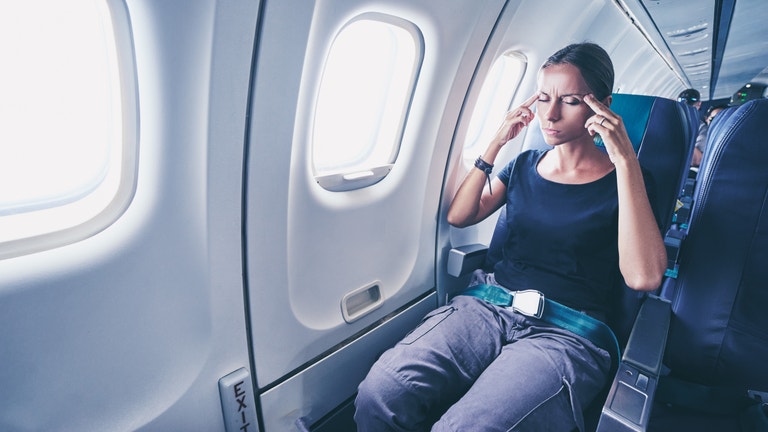
How To Overcome Your Fear Of Flying
by Imani BashirAs long as I can remember, my fear of flying always involved absurd “what if?” scenarios. What if the emergency doors open and sucks everyone out of the plane? What if the pilot takes a break to go to sleep? What if a bird flies into the plane and promptly gets sucked into the engine? (Oh, wait.)
It’s those “what ifs” that can cause a lot of travellers extreme anxiety. What if this turbulence knocks the plane right out of the sky? What if the engine explodes? What if the snack cart flies down the aisle, somehow opening the cockpit door and knocking both pilots unconscious?
Whatever your fears, we’ve got some ways for you to cope.
Find the facts
The facts of flying may help you to be less fearful. For example, did you know that air travel is the safest mode of transportation?
According to David Ropeik, a risk communication instructor at Harvard University, your odds of dying in a car accident are about one in 5,000. And your odds of dying in a plane crash are about one in 11,000,000. In fact, you’re more likely to be struck by lightning, with a one in 13,000 chance for your lifetime.
Practice visualisation
When you’re afraid or anxious, you are completely focused on everything happening around you. You feel the plane drop a little, and you panic. The plane shakes, and your mind automatically thinks of the worst possible scenario.
Practicing visualisation can help you stay as calm as possible.
I imagined that I was driving. I pictured my hands holding a steering wheel. (I did not hold my hands up, because I am not insane.) I felt myself hitting the gas pedal (in my mind). I rode the turbulence like we were on a dirt road, enjoying an adventure, not hurtling through the sky.
Outside of visualisation, there are many other ways that you can keep yourself calm during turbulence:
Entertainment: Have stuff to distract you within arm’s reach. Maybe it’s a book you can’t put down, your favourite movie or TV show, or calming music.
Barf bag: You probably won’t need it, but if you do, you’ll be glad you have it. Your seat might already come with one, but if not, ask a crew member for one when you board or bring your own (make sure it is able to hold in liquids).
Comfy stuff: Soft blankets, a neck pillow, your favourite hoodie or slippers can all go a long way to helping you relax and be in a calmer state of mind when turbulence comes up.
Don’t forget to breathe
When we are experiencing any form of fear, anxiety, or stress we tend to hold our breath. A simple breathing technique to partner with visualisation can relax the body and clear the mind—allowing you to remember that you are safe and ok.
What to do if you’re flying with kids
The reality is that many of us do not fly alone; as the parent or guardian, you don’t want your kids to know how nervous you are. Instead, keep both of you distracted by engaging with them.
Do something together that takes your mind off your mental state. Play Mad Libs or share one of those detailed zen colouring books. Deal a game of Crazy 8s or Gin. Bring a magnetic chess board or a book of crossword puzzles.
When you can, help others
You may get to a point where your fears have calmed down and you’re in the position to help someone else who’s panicky.
But if you do spot someone you think may be having a panic attack and a flight attendant isn’t available or you feel compelled to help, Paz suggests simply approaching the traveller and asking them if they are feeling nervous or panicky. “By labelling the person’s strong reactive emotion, you help in lessening the intensity; it’s comforting to understand what one is experiencing,” he explains.